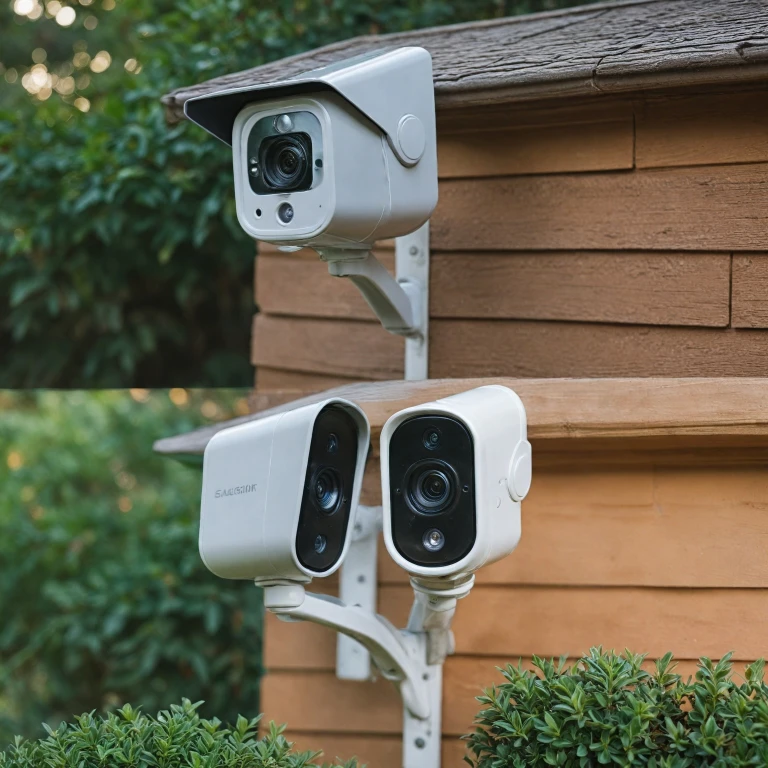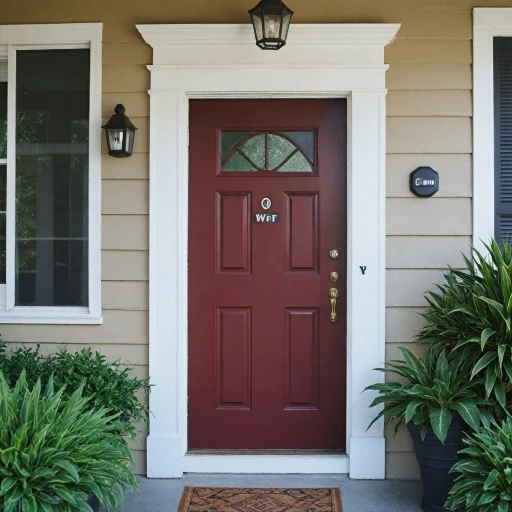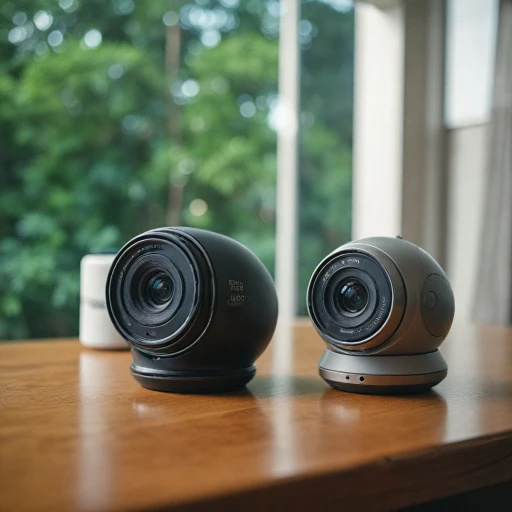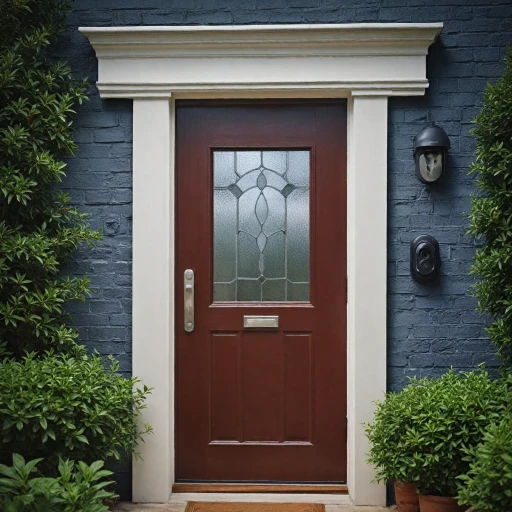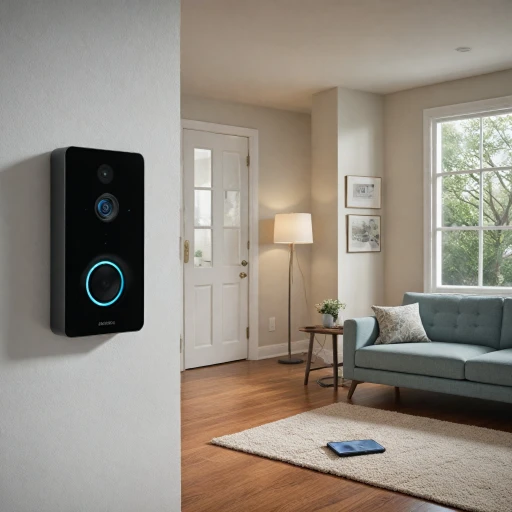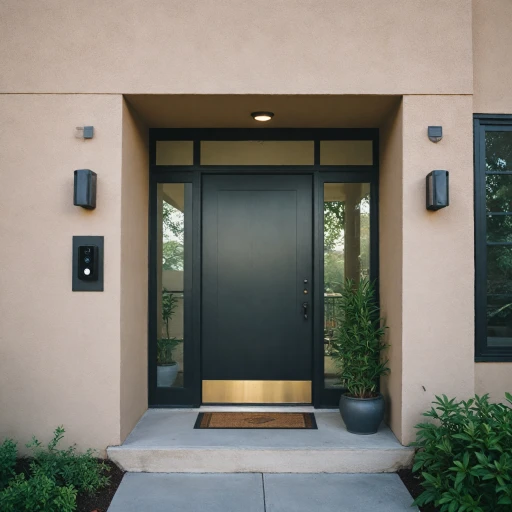Understanding the Basics of Arlo and Ring Cameras
Getting to Know the Brands and Their Offerings
The market for home security systems has exploded, with Arlo and Ring leading the pack. These two brands offer a plethora of security cameras tailored to a variety of needs. Understanding their core differences is critical in determining which is best suited for your home. Arlo and Ring each have a distinct approach to their product lines. Arlo's catalog features options like the Arlo Pro and Arlo Ultra, known for their advanced video quality and robust motion detection capabilities. Arlo's cameras are particularly appealing to those who prioritize video clarity and wireless flexibility, given their focus on battery-powered options. Meanwhile, Ring, a subsidiary of Amazon, offers an integrated ecosystem that includes the Ring Alarm system and video doorbells. Ring cameras are famously part of Amazon's portfolio and are recognized for their ease of use and smart integration capabilities. Utilizing the Ring Protect subscription plan enhances their functionality with features such as professional monitoring and extended video storage. Both Arlo and Ring cater to various security needs with competitive features, but they do so from different angles—Ring leans on smart home integration and seamless operation through interconnected devices, while Arlo shines with its emphasis on video quality and flexible security configurations. Explore more about the world of advanced 4K surveillance and how these technologies might impact home security by visiting Exploring the World of 4K Surveillance Cameras.Performance and Video Quality: Arlo vs Ring
Video Resolution and Clarity: A Deep Dive
Both Arlo and Ring have made their marks with top-notch video quality, but there are nuances to consider. Arlo's cameras, notably the Arlo Ultra, offer stunning 4K video resolution, providing crystal-clear imagery that is especially beneficial for expansive surveillance needs. On the other hand, Ring cameras typically deliver a maximum 1080p resolution, adequate for most standard monitoring applications.Field of View and Coverage
Field of view is another critical aspect where these brands diverge. Arlo security cameras tend to offer wider viewing angles, with some models delivering up to 180-degree views, making them ideal for monitoring large areas with fewer devices. Ring cameras, while more limited in this respect, still offer a respectable view range that suits many household security systems well.Low-Light Performance: Night Vision and More
When it comes to low-light scenarios, Arlo and Ring again showcase their strengths. The Arlo Ultra stands out with its advanced night vision capabilities, often enhanced by built-in spotlights that activate upon motion detection, illuminating areas to aid in clearer night-time video capture. Ring, however, also excels with features such as color night vision in certain models, ensuring that users do not miss critical details even in the dark, through its smart security cameras.Pro-Level Monitoring
For those seeking professional monitoring capabilities, both Arlo and Ring offer solutions. Arlo integrates seamlessly with the Arlo Secure monitoring plan, while Ring cameras connect with Ring Protect plans that include Ring Alarm systems. These subscriptions enhance video quality by enabling features like cloud video storage and advanced motion detection options. In conclusion, when evaluating Arlo vs Ring for video performance, it's essential to weigh your specific surveillance needs. Whether the higher resolution of Arlo's 4K cameras or the efficient capabilities of Ring's video doorbells and cameras better meet your needs depends on your particular security system requirements.Smart Features and Integrations
Exploring Advanced Functionalities
When selecting a home security system, the smart features and integrations can greatly influence your decision. Both Ring and Arlo provide a suite of offerings that enhance the functionality and user experience of their cameras and systems.
Intelligent Motion Detection
Both Ring and Arlo security cameras prioritize effective motion detection to enhance monitoring. Ring cameras offer customizable motion zones, allowing users to specify areas to focus detection, which is beneficial for minimizing false alerts. Arlo, on the other hand, leverages advanced AI-powered detection, capable of distinguishing between people, animals, and vehicles, which is ideal for users who require precise and categorized alerts.
Integration with Smart Home Systems
Seamless integration with existing smart home devices is vital for a cohesive security system. Ring cameras, especially when paired with the Ring Alarm system, offer extensive integration with Amazon Alexa, allowing users to control devices with voice commands and view live feeds on Echo Show devices. Arlo cameras are more versatile in their integrations, compatible with Google Assistant, Amazon Alexa, and even Apple HomeKit, which provides flexibility as the core of a smart home ecosystem.
App and Interface Usability
A user-friendly app plays a pivotal role in the overall user experience. The Ring app is praised for its straightforward interface, providing easy access to video streams, motion settings, and the Ring Protect subscription options. Meanwhile, the Arlo app offers more features like the Arlo Secure monitoring plan that includes enhanced emergency response options. For those interested in adjusting Wi-Fi settings on their video doorbells, steps are available to ensure smooth operation when networks change.changing Wi-Fi settings on your video doorbell
Subscription Packages
Both Arlo and Ring offer subscription plans that unlock additional features. Ring Protect plans are tailored, offering 24/7 professional monitoring and extended storage for recorded videos. Arlo Secure subscriptions also provide professional monitoring, along with enhanced AI features and richer resolution options. It's crucial to evaluate these plans, considering your specific needs and any associated costs, for making the best choice.
In essence, both Ring and Arlo offer remarkable smart features and integration capabilities that cater to different user preferences. Your choice will largely depend on the specific functionalities and ecosystems you prioritize in your home security setup.
Pricing and Subscription Plans
Cost Analysis of Arlo and Ring Security Solutions
When choosing between Arlo and Ring, understanding their pricing and subscription plans is crucial. Both brands offer a range of options tailored to different needs and budgets, but there are key differences to consider.
Subscription Plans and Features
Ring provides several subscription tiers under its Ring Protect plans. These plans offer features like video storage, professional monitoring, and extended warranties. The basic plan is affordable and provides essential video storage, while the more comprehensive plans include advanced features like 24/7 professional monitoring and cellular backup for the Ring Alarm system.
Arlo, on the other hand, offers the Arlo Secure plans, which include features such as cloud storage, advanced object detection, and activity zones. Arlo's higher-tier plans also offer emergency response services and enhanced video quality options, which can be particularly beneficial if you are using Arlo Pro or Arlo Ultra cameras.
Initial Costs and Equipment Pricing
Both Arlo and Ring have varying initial costs depending on the specific models and packages you choose. Ring cameras and video doorbells are often competitively priced, especially if you purchase them through Amazon, which frequently offers discounts and bundles.
Arlo cameras, such as the Arlo Pro and Arlo Ultra, tend to be on the higher end of the price spectrum. However, they often include advanced features like superior video quality and longer battery life, which can justify the higher upfront cost.
Long-Term Value and Considerations
While both brands offer competitive pricing, the long-term value can differ based on your specific needs. If you prioritize comprehensive monitoring and smart features, investing in a higher-tier subscription plan might be worthwhile. For those who prefer a more basic setup, the entry-level plans can still provide essential security features.
Ultimately, the best choice will depend on how you weigh the importance of initial costs against ongoing subscription fees and the specific features you need for your security system.
User Experience and Customer Support
Ease of Use and Interface
When it comes to user experience, both Ring and Arlo have designed their apps to be intuitive and user-friendly. The Ring app, available on iOS and Android, offers seamless integration with other Ring products, such as the Ring Alarm and video doorbell. It allows users to easily view live video feeds, customize motion detection settings, and manage subscriptions like Ring Protect.
Arlo, on the other hand, provides a slightly different interface with its Arlo Secure app. It offers comprehensive control over Arlo security cameras and systems, including the Arlo Pro and Arlo Ultra series. The app supports features like geofencing and scheduling, making it a robust choice for those who prioritize smart security.
Installation and Setup
Both brands offer straightforward installation processes, though there are some differences. Ring cameras, especially the battery-operated models, are designed for easy DIY setup. The base station for Ring Alarm systems can be set up in minutes, providing a quick start to home security.
Arlo cameras, particularly the Arlo Pro models, also offer simple installation, with magnetic mounts and wire-free options. The Arlo base station enhances connectivity and extends battery life, making it a strong contender for those who want flexibility in camera placement.
Customer Support and Reliability
Customer support is a critical aspect of any security system. Ring offers support through various channels, including phone, chat, and an extensive online help center. Their professional monitoring service adds an extra layer of security for those who opt for it.
Arlo also provides multiple support options, including a community forum and direct contact methods. Their monitoring plan offers added peace of mind with professional monitoring services available for an additional fee.
In conclusion, both Ring and Arlo deliver solid user experiences with their security systems. The choice between them may come down to specific needs, such as the type of monitoring plan or the ease of integration with other smart home devices.
Privacy and Security Considerations
Prioritizing User Privacy and Data Protection
The security and privacy of your home and personal data should remain top priorities when choosing between Arlo and Ring camera systems. Both brands offer distinct approaches to safeguarding user information.- Data Encryption: Arlo and Ring employ advanced encryption protocols to protect video footage and personal information. This ensures that your data remains secure, both during storage and transmission over the internet. With cybersecurity threats on the rise, robust encryption is an essential feature in any smart security system.
- User Access Management: Both Arlo and Ring provide apps that enable remote access to your security cameras and video doorbells. Users can manage access privileges, ensuring that only trusted individuals can view live feeds or recorded video. It's crucial to routinely check and update access permissions to maintain control over who can monitor your security system.
- Data Storage Options: Ring cameras and the Ring Protect plan offer cloud storage for recorded footage, allowing users to review past events at their convenience. Similarly, Arlo offers cloud storage through its Arlo Secure subscription, and some models provide local storage options via a base station. Deciding on the best storage solution often depends on user preferences and privacy concerns.
- Compliance with Privacy Legislation: Although specific regulations often vary by region, both Arlo and Ring strive to comply with global privacy standards. This includes adherence to the General Data Protection Regulation (GDPR) in Europe, showcasing a commitment to user privacy and data protection.
